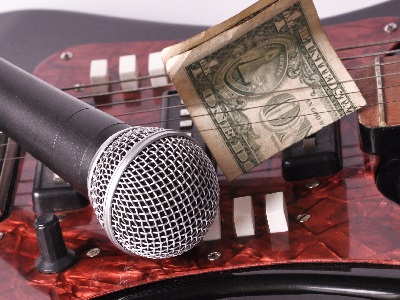Singing Exercises to Use for Ear Development
 So you’re tired of your singing hurting not only your ears, but the ears of those around you? Or maybe you have a great voice, but struggle to hit pitches.
So you’re tired of your singing hurting not only your ears, but the ears of those around you? Or maybe you have a great voice, but struggle to hit pitches.
Either way, training your ear can do wonders not only for your singing but for your playing and transcribing songs by ear as well.
The first exercise, and most important, is also the one that will seem the most ridiculous. Simply grab a recorder and push the record button. Now sing. An important thing to do for this exercise is to draw out your syllables and attempt your full range.
After a few minutes of singing, shut the recorder off and bring it over to your piano or guitar. Now press play and, using the keys on your piano or the fretted notes on your guitar, try to match your notes. This will give you an idea of your range. When you have established all of the notes, write them down on a piece of paper.
Now that you understand your range, you can start off easily and cater to your abilities.
It’s Time to Test Your Memory
Within your newly discovered range, one by one play the notes you heard on the tape and, after pressing record once more, attempt to replicate those notes, striking them on your instrument of choice and singing along with the note name.
Once you can comfortably sing within your range at a consistent (9/10) rate, you can begin the second exercise. This exercise may surprise you, as some believe they learn slower than they do, and some believe they learn faster than they really do. This exercise will prove, once and for all, how quickly or slowly you actually learn.
Using your paper of notes, pick a note and sing it. Sounds simple, right? Once you begin singing the note, play the exact same note on your instrument. You may discover that you are sharp, or even flat. If so, correct your pitch and move on to the next note. For more exercises, you might want to look at an earlier article on introduction to ear training.
When the time comes that you are able to complete the second exercise without any mistakes, it is time to move on to the last exercise. This exercise will be the hardest, as it requires a lot of training.
Play a Note on the Keyboard And Write It Down
Attempt to replicate the note without accompaniment, and then play the note. This will tell you how well your ear has developed. The closer you are, the further you have come.
I suggest starting out by choosing five notes at a time, whether those notes be sharps, flats, or non accidental notes. Once you have learned the notes and are able to replicate them from memory, move on to another set.
Very few people are able to replicate each note on a piano. This is not the goal of the exercise. Even if you are an octave below, it is the note recognition that is important. If you are an octave below a C3, you are still singing a C. This is what is important, being able to recognize the notes from memory. If you can sing a lower or higher octave of a note, you can easily recognize the same note in a different octave.
As with all musical abilities, these singing exercises for ear training will take hours of practice and repetition, but as any musician will tell you, a properly trained ear is invaluable.
Everything You Need to Become a Great Guitar Player…
For the most comprehensive step-by-step guitar training program, we highly recommend Gibon’s Learn & Master Guitar course. This award winning DVD course is currently having a 3-day sale and you get to save $100 off the usual price today!
Click here to find out more information and get the course before this promotion ends…







Leave A Comment